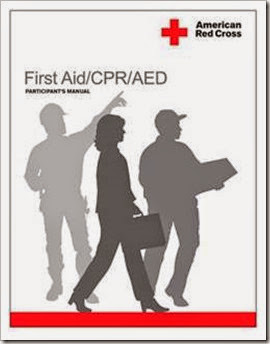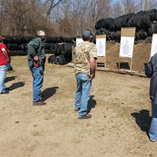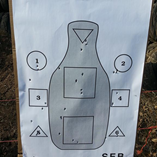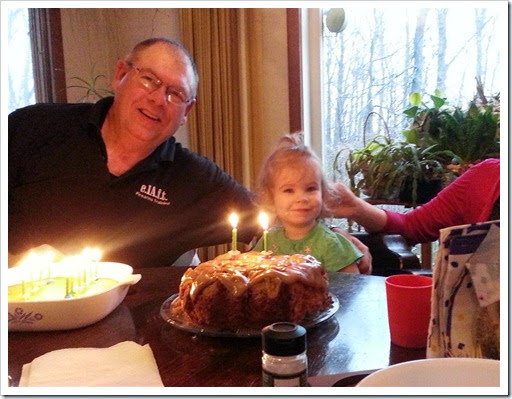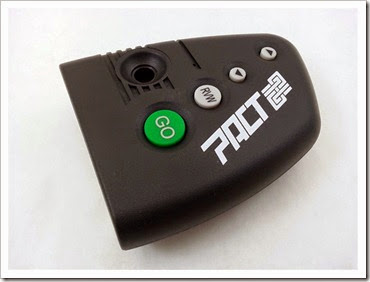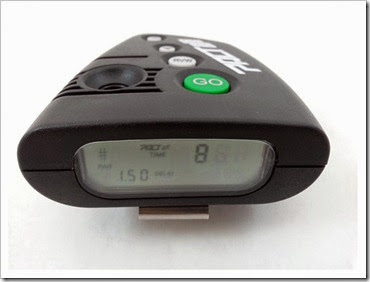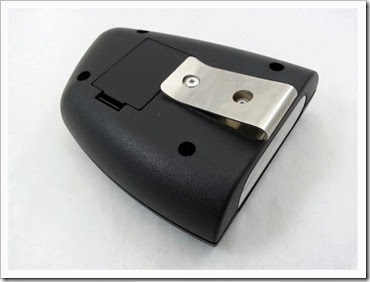The 2014 NRA AM was as much about personalities as it was about seminars or new and innovative equipment for the industry. The size and scope of the offerings on the show floor was stunning and exhausting to just walk through. 9 acres . . . let me say that one more time . . . 9 acres of vendors. From Colt’s $60,000 Gatling gun reproduction to the latest in flashlights from Surefire – it was pretty damn impressive!
But what I really enjoyed most was meeting some of the personalities that I read and comment on in the gunny blog world. Quite honestly, they were – without exception – the most welcoming bunch I’d ever met and virtually all conversations had the touch and feel of long-time family friends.
I arrived Thursday evening and shortly after check-in I caught up with OldNFO. I’ve had the pleasure of hosting him in one of my courses and enjoy his comments on my offerings to the world. And, being two “seasoned” (though I just a touch more so) vets – we seem to click pretty well. He checked in and pretty well crashed, still attempting to readjust his body clock from 3 weeks in Australia.
A bit later Keads showed up in a very red Ford Mustang. He got checked in and then said we were to meet up with Murphy’s Law of Lagniappe's Lair and Aaron of The Shekel - Coins, Law and Commentary. We headed off to the Black Swan for a meal of a very good burgers, fries and – for me – a very tasty Scottish Stout. Aaron is a diver and has had a number of posts on winter dives below the ice. I rank this right up there with jumping out of perfectly good airplanes and shared some of my thoughts on the matter. Murphy’s Law is the doggie daddy of Murphy and Bell – two German shepherds who have provided both my wife and I with a number of good laughs as their exploits are recounted on his blog. It was a very nice evening of good friends and conversations.
Friday morning saw OldNFO and I down in the lobby for breakfast. As I’m chatting away a good sized fellow approaches OldNFO from behind, motions to me to be quiet and then gives OldNFO a double “wet-willie” - quite an introduction to Bubblehead Les. He’s a good sized critter and an ex-submariner. Today’s boat must truly be built larger than in years past!
Soon after Midwest Chick and Mr. B of In the MIDDLE of the RIGHT joined us. We worked through breakfast waiting for Keads to show. He never did though he finally put in an appearance at the convention center shortly after we arrived. Seems his drive (about 9 hours) did quite a job on his back and he spent a good part of the night trying to soak out the pain.
I discovered that Midwest Chick is a baking and chocolate craftswoman. The way she shared her thoughts on tastes, textures and recipes (she’d worked on some for years???) let me know I was in the presence of a true master – and a very fun person to chat with.
Mr. B has had a very broad range of jobs and skill sets from precision metal bending for military contractors to managing a motel. Again, turf rich for good conversation.
By this time – to be honest – I was feeling like crap. I’d caught some kind of bug that would stay with me all through the convention, through the trip home and as I type this I am just beginning to make real headway on shaking the damn thing. So I played the “I’m sick” card and begged a ride to the convention center with OldNFO.
Once there we went to pick up our press credentials (since I’m a big time blogger and all). The NRA really had their stuff together – packets were readily available, press pass pouches already made up and we were rolling in no time at all. The press area provides a place to sit, connect to post (sorry, felt crappy enough I posted nothing) and just to “take a load off”. I introduced myself to a very familiar face – Jay of MArooned. He, of course, didn’t know me from Adam but it was fun to see the “stash” in real life!
OldNFO and I then headed to the floor to look around. His blog has much better coverage of the floor than I could offer so I will simply tell you to head his way and go through his reports. The one thing you quickly come to realize is that OldNFO KNOWS EVERY SINGLE PERSON ON THE FACE OF THE EARTH!!! It was fun just to step back a bit and watch the show. And, he introduced me to virtually everyone we met. It was a fine time!
We swung by the Galco booth where Kathy Jackson of Cornered Cat was signing books. Kathy put in several good words for me with her publisher that I’m sure played no small part in their picking up my book. I’m hoping to see it on shelves this summer. She was energetic, funny and just an all-around nice lady. We had another chunk of time to chat about her career and family a bit later as well.
Another corner and another booth – there was Tam of View From The Porch. She has two reputations – one of being quite reserved around a bunch of people – I’d agree. And, one of being one of the most knowledgeable people around regarding firearms. From reading her blog for the past couple of years – there’s no doubt that’s true as well.
We wandered, we chatted, we shook hands . . . and by 3-4PM we’d both had enough for the day – off we went back to the motel. OldNFO had gotten an invitation to a barbeque for the evening and he brought Keads and myself along. It was at the home of a fellow named Jack. He had two grills going, a mixture of burgers, ribs, pork shoulder, steak . . . holy crap it was a meat lover’s dream. He was a true artist wielding spices, temperature probes, checking, turning . . . pretty darn impressive to watch and even better to taste!
Here was a whole new group of folks to meet. Daddy Bear and Daughter arrived and for a high school sophomore – she is a very well-spoken and “clear” young woman. She’s become a rifle shooter via JROTC and seemed quite pleased when her dad complained of her out shooting him on a regular basis.
Oleg arrived and while I didn’t introduce myself directly (by this time I was the old guy in the blue chair who looked like he felt like crap and had a voice that sounded like a road grader) it was fun just to watch him bounce from one blogger friend to another. He’s has become one of the preeminent photographers in the shooting world.
I also got to meet Erin Pallette of Lurking Rythmically complete with a bright blue My Little Pony T-shirt. Somehow our conversation turned towards shooting stances on the range and all of a sudden the instructor side popped out was I was working of foot position, a combat crouch, punching out, face behind the sights . . . it was a nice and Erin was very open and accepting of my suggestions.
Back in the chair I notice a fellow passing by with a Caiman crocodile leather holster and realize this must be Dennis from Dragon Leatherworks. The holster was featured in an NCIS special 2-part series set in New Orleans. Later, with a plate full of food, he took the chair next to me and I got to hear how he got started in making holsters and belts, his work with the NCIS series and what his future plans are. Very nice guy, very interesting conversation – I’m looking forward to seeing more of his work on NCIS.
That was about a wrap for the evening, we needed to be up at the butt crack of dawn the next day for Ambulance Driver and TOTW Shooter Self Care class.
Kelly Grayson is a full time EMT with years of teaching this type of course across the nation. In fact, if you or your shooting club and their RSOs need a Shooter Care class, go to his website and make arrangements to take one. Franciscan St. Francis Health hospital provided the teaching space, Brownell’s chipped in with food and drinks and Bound Tree Medical provided all components for the BOK at cost. Kelly provided his time and life time of experience at no cost. It may well be the most valuable 4-hours of time any of us ever spent should the need arise.
Class over, we rushed back to the invitation-only event for NRA trainers and Training Counselors for their “update”. As in all things, changes come – and so to with the NRA training programs. While a little short on detail, they are addressing the issue of some bad-actor instructors who are going “off the reservation’ when it comes to teaching the course work. There is a sense of what’s coming but little detail. I’ll keep you all posted.
And, with the end of that portion of the session I left with a 7-hour drive before me. A few reflections . . .
As I wrote this and looked at the “handles” of all the bloggers it was a bit like my early days in CB radio. I knew people by “handles” but not names. As is the case here . . .
All conversations were between “old friends” . . . open, honest, as deep as you wanted to go and just fun.
Protesters . . . what protesters . . .
Show floor . . . overwhelming . . .
Can’t wait for next year!
